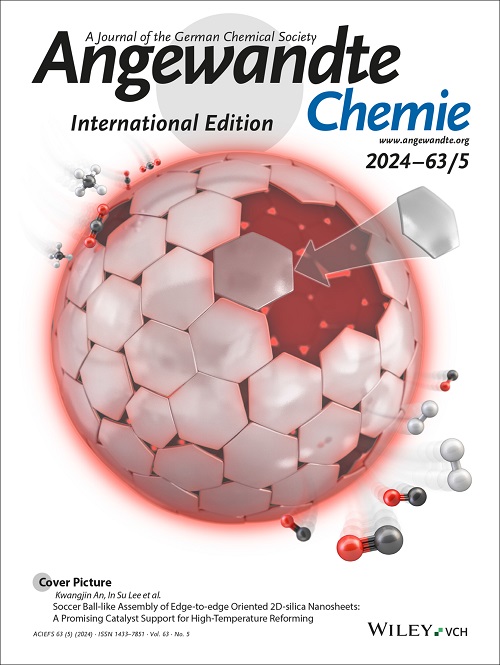通过轴向 Cl 介导改变 Fe-N-C 的对称性以制造高性能锌-空气电池
IF 16.1
1区 化学
Q1 CHEMISTRY, MULTIDISCIPLINARY
引用次数: 0
摘要
本文章由计算机程序翻译,如有差异,请以英文原文为准。
Altering the Symmetry of Fe-N-C by Axial Cl-Mediation for High-Performance Zinc–Air Batteries
Fe-N-C catalyst is acknowledged as a promising alternative for the state-of-the-art Pt/C in oxygen reduction reaction (ORR) towards cutting-edge electrochemical energy conversion/storage applications. Herein, a "Cl-mediation" strategy is proposed on Fe-N-C for modulating the catalyst's electronic structure towards achieving remarkable ORR activity. By coordinating axial-Cl atoms to iron phthalocyanine (FePc) molecules on carbon nanotubes (CNTs) matrix, a Cl-modulated Fe-N-C (FePc-Cl-CNTs) catalyst is synthesized. The as-prepared FePc-Cl-CNTs exhibit an improved ORR activity with a half-wave potential of 0.91 V vs. RHE in alkaline solution, significantly outperforming the parent FePc–CNTs (0.88 V vs. RHE). The advanced nature of the as-prepared FePc-Cl-CNTs is evidenced by a configured high-performance rechargeable Zn-air battery, which operates stably for over 150 h. The experiments and density functional theory calculations unveil that axial-Cl atoms induce the transformation of FePc from its original D4h to C4v symmetry, effectively altering the electrons distribution around the Fe-center, by which it optimizes *OH desorption and subsequently boosts the reaction kinetics. This work paves ways for resolving the dilemma of Fe-N-C catalysts’ exploration via engineering Fe-N-C configuration.
求助全文
通过发布文献求助,成功后即可免费获取论文全文。
去求助
来源期刊
CiteScore
26.60
自引率
6.60%
发文量
3549
审稿时长
1.5 months
期刊介绍:
Angewandte Chemie, a journal of the German Chemical Society (GDCh), maintains a leading position among scholarly journals in general chemistry with an impressive Impact Factor of 16.6 (2022 Journal Citation Reports, Clarivate, 2023). Published weekly in a reader-friendly format, it features new articles almost every day. Established in 1887, Angewandte Chemie is a prominent chemistry journal, offering a dynamic blend of Review-type articles, Highlights, Communications, and Research Articles on a weekly basis, making it unique in the field.

 求助内容:
求助内容: 应助结果提醒方式:
应助结果提醒方式:


